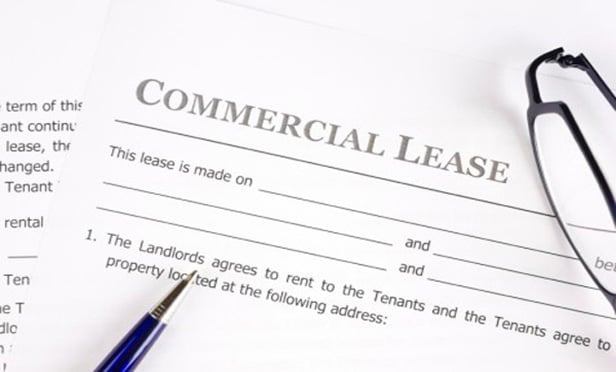Columns & Departments

Business Crimes Hotline
To Release or Not Release Grand Jury Documents? The D.C. Circuit Says No.
Features

A Clash Between 'Free and Clear' and Tenants' Rights Under Bankruptcy Code Section 365(h)
With the recent carnage in the retail industry, a lot of attention goes to the fate of landlords when their tenants seek bankruptcy protection. A recent case that brings balance is <i>Revel AC Inc. v. IDEA Boardwalk, LLC</i>.
Columns & Departments

Case Notes
Contractual Allocation of Damage Risk Thwarts Insurer's Subrogation Claim<br>Lacking Specifics, Lease Term Is Unenforceable
Features

Ultra Music Festival Disputes Result in Decisions Within Days of Each Other
Only days after winning dismissal of an anti-trust lawsuit over its 2019 move to a new location in Miami, FL, for the Ultra Music Festival, Worldwide Entertainment lost its bid to reopen a court case over use of the "Ultra Music" brand for a festival overseas.
Features

High Court's View of 'Full Costs' in Copyright Litigation
A unanimous U.S. Supreme Court, led by Justice Brett Kavanaugh, held that the phrase “full costs” in §505 of the Copyright Act means all of the costs specifically enumerated in the general cost-shifting statutes, such as transcripts and fees for court-appointed experts and interpreters.
Features

U.S. Supreme Court's Ruling on Copyright Registration
The Supreme Court had granted cert in <i>Fourth Estate</i> to resolve a split in the federal circuit courts as to whether §411(a) of the Copyright Act could be read to allow commencement of an infringement action once a registration application filed with the Copyright Office is complete (the “application approach”) or, instead, only (subject to limited statutorily specified exceptions) upon issuance by the Copyright Office of the registration (the “registration approach”).
Features

Claim of Non-Purchasing Tenant Status Rebuffed
When developers convert occupied buildings to condominiums or, less frequently, cooperative ownership, non-purchasing tenants are protected from eviction. When tenants in those buildings acquire vested rights as non-purchasing tenants is significant for developers, because the timing dictates the number of units that will be available for sale to outside purchasers. It is, therefore, no surprise that this is a highly charged and contested issue.
Features

The Supreme Court Finally Resolves An Old, Vexing Question: Does "Registration" Mean "Registration"? Answer: "Yes."
In Fourth Estate Pub. Benefit Corp. v. Wall-Street.com, LLC, the Supreme Court resolved a circuit split decades in the making by holding that a copyright is not "registered" within the meaning of the Copyright Act unless and until a registration certificate actually has issued.
Features

10 Categories of Provisions to Consider in any Commercial Lease
Part One of a Two-Part Article When entering into a lease for commercial space, there are some items that should not be overlooked. Landlords and tenants alike should make sure that the following things are addressed in the lease, one way or another.
Columns & Departments

Development
Cemetery Entitled to Use Variance<br>ZBA Usurpation of Planning Board Authority<br>Statutory Factors Need to Be Considered In Denial of Area Variance
Need Help?
- Prefer an IP authenticated environment? Request a transition or call 800-756-8993.
- Need other assistance? email Customer Service or call 1-877-256-2472.
MOST POPULAR STORIES
- The 'Sophisticated Insured' DefenseA majority of courts consider the <i>contra proferentem</i> doctrine to be a pillar of insurance law. The doctrine requires ambiguous terms in an insurance policy to be construed against the insurer and in favor of coverage for the insured. A prominent rationale behind the doctrine is that insurance policies are usually standard-form contracts drafted entirely by insurers.Read More ›
- A Lawyer's System for Active ReadingActive reading comprises many daily tasks lawyers engage in, including highlighting, annotating, note taking, comparing and searching texts. It demands more than flipping or turning pages.Read More ›
- The Brave New World of Cybersecurity Due Diligence in Mergers and Acquisitions: Pitfalls and OpportunitiesLike poorly-behaved school children, new technologies and intellectual property (IP) are increasingly disrupting the M&A establishment. Cybersecurity has become the latest disruptive newcomer to the M&A party.Read More ›
- Abandoned and Unused Cables: A Hidden Liability Under the 2002 National Electric CodeIn an effort to minimize the release of toxic gasses from cables in the event of fire, the 2002 version of the National Electric Code ("NEC"), promulgated by the National Fire Protection Association, sets forth new guidelines requiring that abandoned cables must be removed from buildings unless they are located in metal raceways or tagged "For Future Use." While the NEC is not, in itself, binding law, most jurisdictions in the United States adopt the NEC by reference in their state or local building and fire codes. Thus, noncompliance with the recent NEC guidelines will likely mean that a building is in violation of a building or fire code. If so, the building owner may also be in breach of agreements with tenants and lenders and may be jeopardizing its fire insurance coverage. Even in jurisdictions where the 2002 NEC has not been adopted, it may be argued that the guidelines represent the standard of reasonable care and could result in tort liability for the landlord if toxic gasses from abandoned cables are emitted in a fire. With these potential liabilities in mind, this article discusses: 1) how to address the abandoned wires and cables currently located within the risers, ceilings and other areas of properties, and 2) additional considerations in the placement and removal of telecommunications cables going forward.Read More ›
- Guidance on Distributions As 'Disbursements' and U.S. Trustee FeesIn a recent case from the Bankruptcy Court for the District of Delaware, In re Paragon Offshore PLC, the bankruptcy court provided guidance on whether a post-plan effective date litigation trust's distributions constituted disbursements subject to the U.S. Trustee fee "tax."Read More ›
